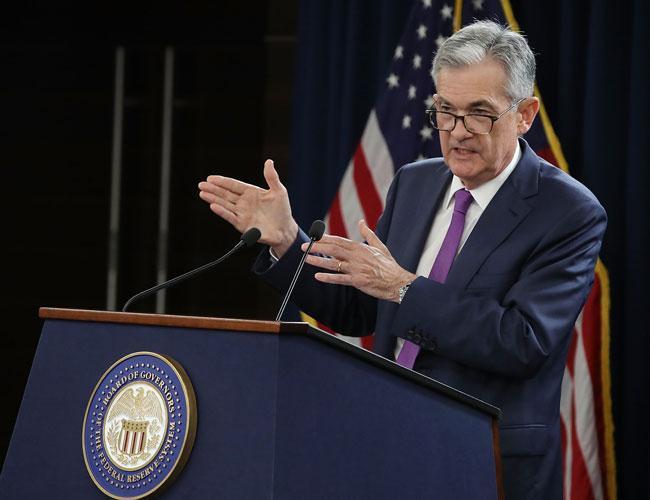
With the United States economy still strong, the Federal Reserve raised the benchmark interest rate on Sept. 26 for the third time this year but showed no indication it would be more aggressive in efforts to head off inflation.
However, Fed Chairman Jerome Powell cautioned trade tensions remained a risk to the outlook, including the potential for rising prices, although he indicated it was too soon to tell what impact it this have on the economy.
On the brighter side, Powell said he did not see any “troubling” vulnerabilities in financial markets, even with stocks near their historic highs in some cases.
In a widely anticipated decision, the central bank boosted the lending rate to a range of 2.0 percent to 2.25 percent, a quarter-point increase in the target range.
Shortly after the announcement, President Donald Trump once again criticized the Fed for raising rates.
“Unfortunately, they just raised interest rates a little because we are doing so well. I'm not happy about that,” Trump said at a press conference on the sidelines of the U.N. General Assembly.
“I would rather pay down debt or do other things,” he added.
“So I'm worried about the fact that they seem to like raising interest rates.”
Asked earlier about Trump's previous criticism of Fed rate hikes which he said could undermine the booming economy, Powell said the central bank did not take “political factors” into consideration.
The Fed members "try to set monetary policy to achieve maximum employment in a complex of price stability.... We don't consider political factors or things like that,” Powell told reporters.
And more moves are on the way with no hint of a pause, although the Fed did not give any sign it was about to become more hawkish and raise rates at a faster pace, as some analysts had suggested.
The Fed once again said "further gradual increases" would allow continued expansion of the economy while keeping inflation around the Fed's two percent target.
Powell said the gradual pace was helping to support the continued economic expansion, even as the benefits have not reached all Americans.
"Many of our country's economic challenges are beyond the scope of the Fed but my colleagues and I are doing all we can to keep the economy strong, healthy, and moving forward," Powell said at a news conference following the announcement.
The statement on the unanimous decision no longer describes the interest rate level as "accommodative," but Powell stressed that that was not an indication of a change "in the path of policy."
The Fed has now raised the key rate eight times since late 2015, with one more expected in the final meeting of the year in December.
The central bank's decision comes amid worsening global trade tensions as President Donald Trump has doubled down on his confrontational stance, with steep tariffs on hundreds of billions of dollars in goods.
Powell said the Fed was hearing a "rising chorus" of concerns from businesses around the country about uncertainty and rising costs.
U.S. companies worry about "disruption of supply chains, materials, cost increases, and loss of markets and things like that."
The Fed's concern is that that could lead to the "loss of business confidence and that can reduce investment."
"It's a risk. You could see prices moving up. We don't see it yet but you could see retail prices moving up," he said.
Wall Street did not appear terribly happy about the Fed decision, and after an initial uptick the three major stock indexes finished the day lower, although such moves are not unusual on the day of an interest rate move.
In their quarterly forecast, the central bankers did not signal that they would have to act more aggressively to constrain prices.
The median forecast continues to expect the federal funds rate to end the year at 2.4 percent, implying one more rate hike this year, and rising to 3.1 percent in 2019, which indicates three more moves.
"The message...was far less hawkish than the worst case in Wall Street forecasts," Chris Low, of FTN Financial, said in a research note.
However, the range of forecasts was spread widely with an equal number of central bankers expecting two, three or four increases in 2019.
Jim O'Sullivan of High-Frequency Economics said his team continued to expect four hikes next year.
"The dropping of the 'accommodative' reference could be viewed as dovish, but there is no hint of a pause," he said, and the updated projections are "consistent with policy becoming at least modestly restrictive in order to nudge the unemployment rate back up a little."